How to Survive Winter in Canada
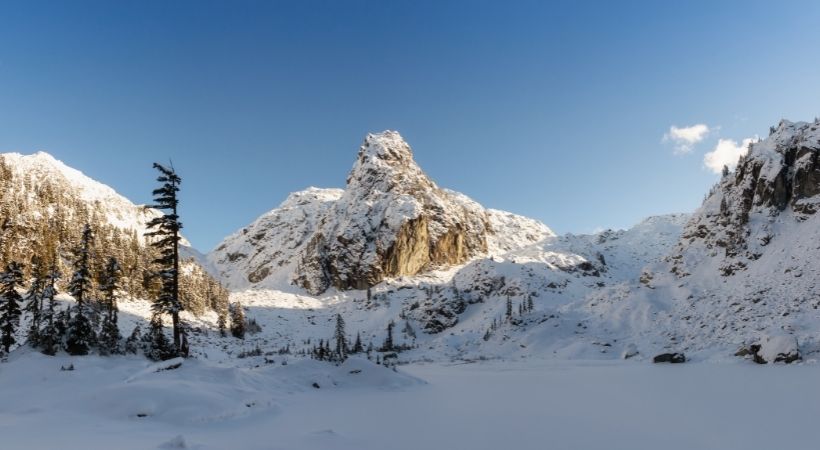
Having lived in a few different countries and visited at least twice as many more, I was often asked, “How does it feel like in Canada in the winter?”, “How do you survive the cold in Canada?” or “Is the winter in Canada intolerably cold?”
In this article, I’ll talk about how to survive winter in Canada from my personal experience.
Well, I grew up in Ottawa, presently the world’s seventh coldest capital city. I remember, when I was 5 years old, after clearing the snow from the roof of our bungalow, we were able to toboggan from the peak of the roof down to the street 10m below. We also built massive snow forts in front of our house. Back then, we usually had yearly snow accumulation over 2 meters.
As a teenager, I spent a lot of time outside making snow sculptures, tobogganing, playing hockey, having snowball fights, skiing, and many other outdoor activities. I can’t remember the cold ever being unbearable, but January was always the coldest month.
Some people still ask if, no matter which city a Canadian lives in, “Is the winter in Canada intolerably cold?” For most international students in Canada, the most hurtful things are the infrequent, major winter storms that occasionally shut down public transport and roadways, like this storm in Ottawa from a few years ago:
'A lot of misery to go around': Extreme winter in Canada
Thankfully, we now have a light rail system that helps avoid the long waiting times for buses that don’t show. When one thinks about the weather in Canada, one has to remember the size of Canada. There are six time zones in Canada; therefore, it’s best to look at each area of Canada on its own.
To give you a better grasp of the size of this maple leaf country, if one were to put a pin in the easternmost tip of Newfoundland and then flip the country eastwards, the western tip of Canada would land somewhere past Moscow.
For more detailed information, the following site is a good source: Climate Canada: Average Temperature, Weather by Month & Weather for Canada
Once you’re in Canada, I find the most accurate source for weather information is Environment Canada: Environment Canada: Weather Information
Is the winter in Canada intolerably cold?
Though recently, the temperatures have rarely been known to plummet to -30 degrees C in a few Canadian cities, it is not that common in those cities where international students go to college or university. Even a few cities can quickly get away with rain boots and a pair or two of warm socks on the coldest days.
To answer the question, “How does it feel like in Canada in the winter?” it’s not so bad. Would you wear a heavy sweater to paddle up the Amazon River? Surviving winter in Canada is all about dressing appropriately.
The following graphs show you the annual climate for a couple of cities in each climate zone, organized by province, from west to east, followed by the territories. Have a gander, and then afterward, I will explain winter clothing. Once you put the graphs together with your newfound knowledge of winter clothing, you should get answer to "How to survive winter in Canada?".
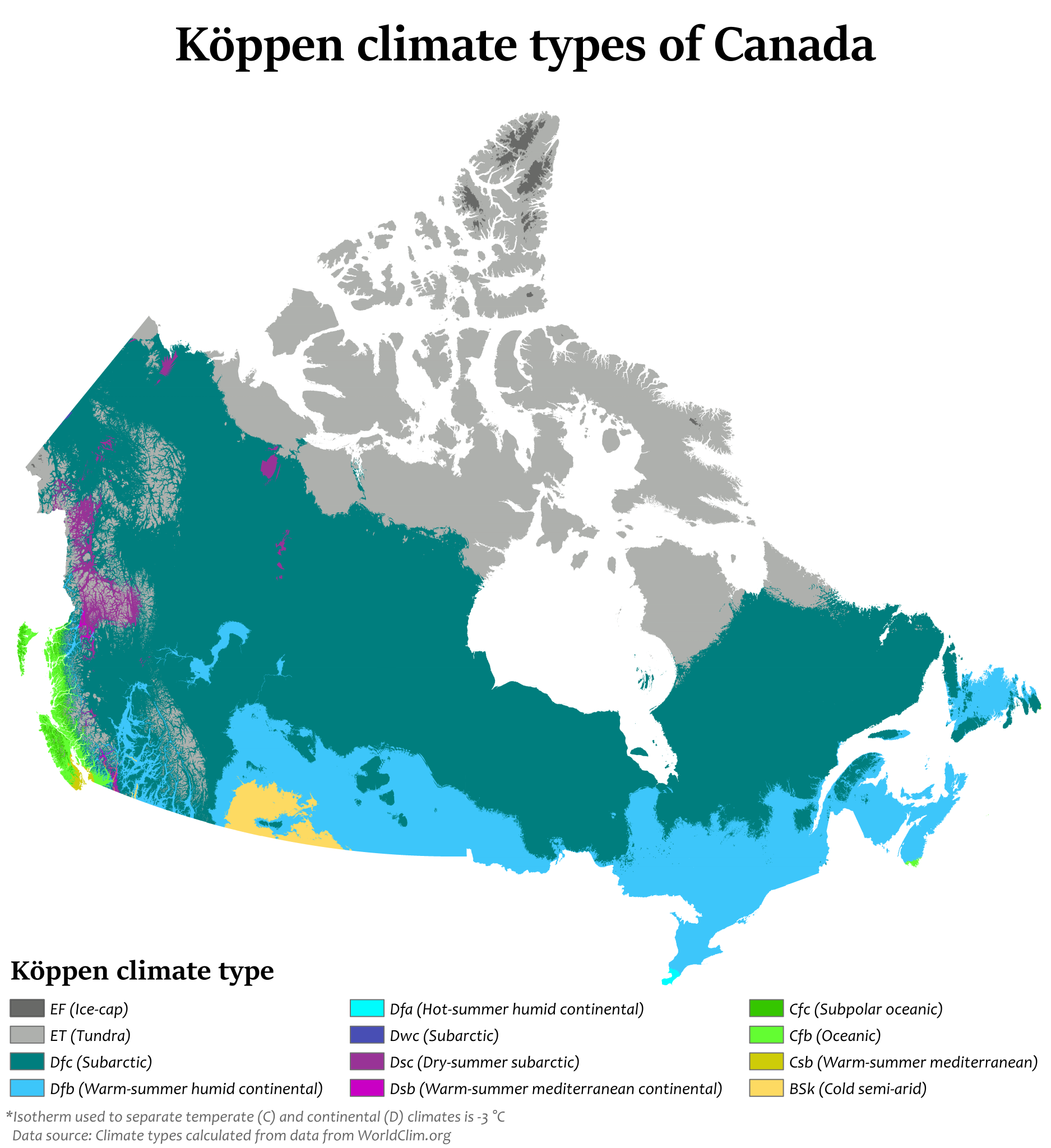
Source: wikipedia.org
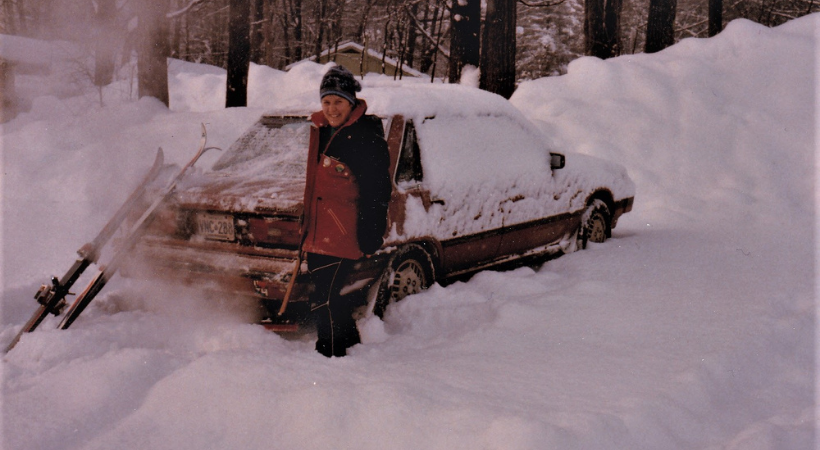
So, now you have part of the answer to ”Is the winter in Canada intolerably cold?”
Another part of the answer has to do with windchill. What’s that you ask?
When it’s cold out and there’s any amount of wind, you may lose body heat more rapidly; therefore, it will feel colder than what a thermometer tells you.
Here’s a good article about windchill: What is Wind Chill? Tips for Staying Warm | Woodland Woman
How do you survive the cold in Canada?
The answer to “How do you survive the cold in Canada?” lies all in your clothing, accessories, and footwear. I will try to educate you on how to dress for winter weather in your university’s city.
I will prepare you for ‘wading’ through knee-deep snow, winds of 50 km/h at -20 C, a little freezing rain (It’s THE worst!), shoveling that knee-deep snow, and going for a leisurely jaunt on snowshoes.
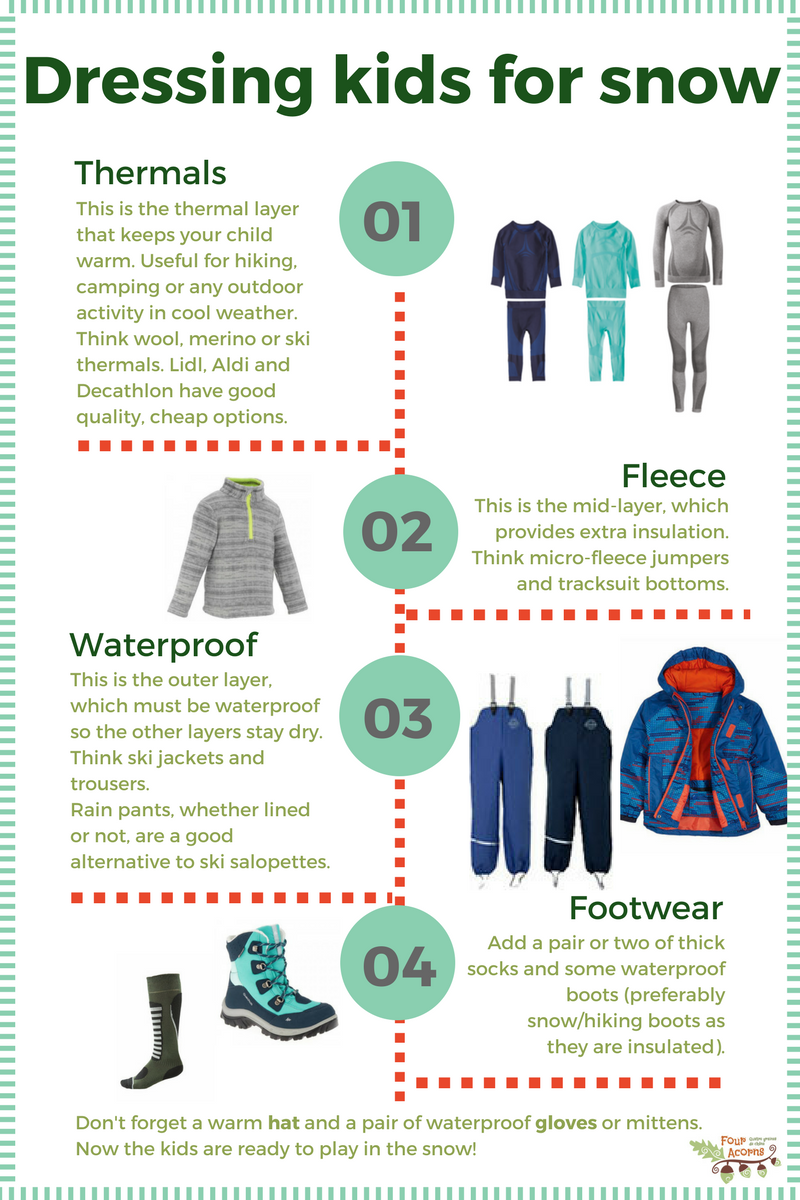
Source: fouracorns.ie
To deal with the winter weather in Canada, international students need to learn how to dress for the weather. They need to learn about layering. There are three reasons to layer your clothing:
-
The innermost layer draws moisture away from your skin. Moisture against your skin, on a cold day, makes it feel about 10 degrees colder; much like humidity in the summer makes you feel warmer.
-
Air is trapped between the layers. Air is actually a good insulator if it is held in place.
-
Wearing layers of clothing allows you to adjust for varying temperatures and outdoor activities throughout your day.
Besides coverings for your extremities, there are three basic layers to consider when dressing for Canadian winters; the inner layer, the regular clothing layer, and the outer shell. Just because I only specify three layers, doesn’t mean that you are limited to 3 or that you must always wear three layers.
1. The Inner Layer - $18-$50
Inner layer clothing usually comprises one of two types of clothing. One type is referred to as thermal undergarments. The other type is moisture-wicking. Both types usually consist of a long-sleeved, form-fitting shirt and a full-length, form-fitting pair of ‘pants’.
Thermal underwear is sometimes referred to as long underwear or long johns. This type of clothing is best made of either wool, alpaca, or man-made material, or a combination of any of those. Cotton is not recommended for cold weather since it retains moisture, cooling your body when you really prefer to stay warm.
-
You may be wondering why wool is recommended since often wool is itchy against the skin. Wool made of fine, long fibers, like Merino wool, is not itchy. Why Does Some Wool Itch, but Not Merino Wool?
Wool has a couple of special properties:-
Wool is water-resistant. Even if it does get wet, it still helps retain body heat.
-
For outdoor enthusiasts, it’s helpful to know that wool is a fire retardant.
-
A not-so-well-known property of wool is that it is antibacterial.
-
-
Alpaca is warmer than sheep’s wool. Its fibers are actually completely hollow, just like a polar bear’s fur. Sheep’s wool fibers only have pockets of air. Alpaca fleece allows air to enter but then retains this warmed air. Alpaca wool has another advantage over sheep’s wool; it is hypoallergenic.
-
You may have seen a fabric referred to as “super washed” wool. This “ super washing” makes the fabric not itch. Unfortunately, the methods and products used to create this wool are quite detrimental to the environment.
-
Moisture-wicking fabrics are great for surviving regular winter days. There are 7 main types, each with its own properties. The 7 Best Moisture Wicking Fabrics for Sweat Management or Fitness.
2. The ‘Regular’ Clothing Layer(s) - unpredictable cost(s)
This layer can vary a lot in properties, in warmth, and in style, of course. These layers may include cotton, wool, or man-made fabrics. Mostly it depends on the weather and your body’s temperature control ability.
You may choose to wear a blouse or dress shirt, with or without a cardigan. Perhaps you like wearing sweatshirts? With or without a turtleneck. Or perhaps you like combining any of those with a thick wool or fleece sweater?
As for ‘regular’ pants ($27-$75), jeans ($27-$110) or sweatpants ($20-$75) are a great choice. Fleece-lined ones for the really cold days. Perhaps you have to wear dress pants? Then opt for heavier material.
For women who like to wear skirts and/or dresses, a warm inner layer or two is usually preferred when the temperature drops below 0 deg. C. Note that one layer may consist of pantyhose ($2-$27).
A longer skirt is much warmer than a mini-skirt, of course. The shorter the skirt the heavier the inner layer must be. Other types of inner layers (usually, but not always, for women), maybe leggings or very thick tights.
3. The Outer Shell - $100-$400
This layer, in my opinion, is the most important layer and the one piece of winter clothing not to scrimp on. Your outer layer may consist of a jacket/coat, snow pants, waterproof pants such as oilskins (oilskin jackets are popular), or ski pants.
Here’s a video that speaks about different winter jackets: 3 Levels of Cold Weather Clothing: Cool, Cold, and Extreme!
One of the most important things to consider when purchasing a winter jacket or coat is if the garment is windproof or not. Cuffs on the end of your sleeves and a drawstring at your waist really help to keep the heat in.
If you mistakenly purchase a winter coat that is not windproof and are not able to return it, all is not lost. By sewing a chamois (pronounced sha-mee) leather in between the layers of your coat you will have helped to fix that problem.
If that’s too much for you, go buy a newspaper, fold it in thirds, and wear it over your chest, behind your coat’s zipper! LOL!
4. Your Extremities - $4-$100
For those of you still asking ”Is the winter in Canada intolerably cold?”, the answer is no, if you protect your extremities. Being cold, to me, is the worst! My fingers, toes, and ears are usually the first place I feel the winter cold. They would also be where I first feel pain from the cold if I hadn’t purchased good winter gear.
Wearing proper accessories on your extremities decreases the likelihood of frostbite, increases your chances of enjoying a Canadian winter day, and is just simply a wise thing to do.
-
Your ears
Keeping your ears warm is easy enough for international students in Canada. There are four options: earmuffs, a scarf, a headband, or a hat/toque. I am of course referring to winter versions of all these items.
-
Earmuffs are often worn by people who are concerned about “mucking up” their hairdo. Winter ear muffs are pretty basic. There are only a few variables. Take a look for yourself:
-
A scarf is another option. One uses the scarf draped around one’s neck, or a completely separate one, to cover one's ears.
-
Winter headbands are a better option. They come in wools and synthetics (and furs ), in insulated and non-insulated, and in various styles. I will mention an adaptable neck warmer here since it can be raised to cover one's ears or made into a tube-shaped ‘hat’.
-
A hat/toque is the most sensible option when the temperature drops below zero. It is the only option when temperatures hit minus 10 C and there’s a wind if one doesn’t have a hood on one’s winter coat.
-
Your fingers
For newcomers to Canada, finding suitable coverings for your fingers, for various weather conditions, maybe the most challenging out of extremity protection. This sort of protection can be divided into 3 classifications, which in some cases, can be worn in layers.
-
Cool-weather gloves or mitts: This sort of finger covering is generally for 10 to 0 deg C. They have no insulation and may have limited water resistance. Leather driving-type gloves, synthetic gloves, and synthetic mitts (mittens) fall into this category.
-
Cold weather gloves or mitts: These hand/finger coverings are generally worn between 2 degrees and -5 degrees. If not waterproof, they should be at least water-resistant. They always have at least some insulation, which is often Thinsulate.
Some people choose to wear two layers consisting of a cool weather glove under a cold weather mitten. The advantage of this practice is its adaptability or the ability to regain some dexterity without baring your skin to the cold.
-
Frigid weather mitts: The very best of them all contain a man-made ‘material’ called “PrimaLoft Kodenshi – a premium, high-tech blend where ceramic particles are embedded into down to reflect body heat back at your skin. The result is warmth and a lot of it.” (Not all of us can afford these).

There are a couple of other trade-marked materials found in frigid weather mitts. They are called ‘PrimaLoft® Gold Insulation Aerogel’ (good enough for NASA) and Gore-Tex. There’s also man-made fleece.
The three natural insulators found in this level of mittens are goose down, alpaca, and wool. These remain very warm insulators as long as they are kept dry.
The outer material of frigid weather mittens may be made of animal skin or of man-made material. Both are treated to be waterproof.
A run-down of this year’s best frigid weather mittens can be perused here: The 8 Best Mittens of 2021
Note that frigid weather mitts are all a little longer in order to fully cover one’s wrists.
-
Your toes
To me, having the best winter footwear that you can afford is of utmost importance. The reason I say this is that once your toes get so cold that it’s painful, you’re unlikely to be able to warm them up until you’re able to remove your boots in a warm environment.
A word of warning: As with fingers, when toes have gotten painfully cold, do not rush to run them under hot water. You will be in extreme pain. (The sudden temperature change actually can make cells burst!) Instead, start with cool water, warming it up slowly.
As with mittens, there is differing warmth in boots. The materials they are made of vary a lot too. Some are waterproof, but many are not. Some have excellent traction and some have almost none. Some barely cover your ankles and others go right up to the knee.
The warmth of any boot can be increased by wearing a warm pair of socks or two if you’ve provided room for them. Remember that air is a very good insulator, so buying tight boots isn’t doing you any favors.
Much more detailed coverage of winter boots can be read here: 7 Important Features to Look for in Winter Boots.
Though my favorite brand of winter boots (Sorel) isn’t listed in the following article (Cost over $100), ITK has done their research, finding you 9 pairs of boots, all under US$100.
9 pairs of winter boots that are warm, waterproof, and under $100

-
Your face and neck
In general, one often doesn’t have to remember to wear face and neck coverings, but when the wind picks up and/or the temperature drops, you will be very happy you remembered.
Face coverings are usually a scarf, a balaclava (50 km/h winds at -20 C) or a neck warmer pulled up over your face. All three come in varying degrees of warmth. Many people concern themselves more with wearing something fashionable than something that will keep them warm enough.
Once you’ve had frostbite a time or two, you may change your position. There are way too many options to cover them here but here are what the three basic face/neck coverings resemble:
Leg coverings: Leg coverings come in many shapes, sizes, warmth, and purposes. Besides the ones I covered above in The Inner Layer(s) and The Regular Clothing Layer there are
-
Leg warmers - $13-$29 Image 16
-
Gaiters (for wading through knee-deep snow) $10-$89
-
Snow pants $40-$89 Image 20
-
Winter cycling gear

One of, if not the best, places to purchase new winter clothing across Canada is Decathlon. Their apparel is of excellent quality at much lower prices than you will find anywhere, for quality goods. The other thing I like about their winter gear is that it has the temperature rating right on the tag. They also carry a lot of athletic wear.
If you’re on an extremely tight budget but are still wanting quality, you might find some used winter coats at either the Salvation Army store, Value Village, or another secondhand shop. These stores can be found all across Canada.
Other well-known national sources for winter gear are Amazon.ca (Can’t try things on first), Mark’s Work Wearhouse/Canadian Tire, and MEC(Mountain Equipment Co-op). For private sales: Kijiji and used(put city name here).com.
Enjoying Canada’s Great Outdoors in Winter
For those of you still asking, “How does it feel like in Canada in the winter?”, here’s another part of my answer: exhilarating!
There are so many outdoor activities to do for people of all abilities and ages. My list is not exhaustive, but most of them can be enjoyed in or near most areas of Canada where international students live. I have participated in all but four of them.
For winter outdoor activities in Canada, I figure what better way to tell you about them than by providing you with links to some good videos.
First Time Snowshoeing/What To Expect
Sled Dogs: More Than Meets the Eye | National Geographic
Also search online for “dog sledding near me”
A Winter Experience at the Banff Upper Hot Springs
Tobogganing in Canada
Massive Snowball Fight - University of Toronto
THIS is how you do WINTER! | Winterlude, Ottawa
Ice Fishing in Canada
Ontario's Best Snowtubing!
Snowboarding World's Craziest Videos | Red Bull Top 5
Snowmobiling In Ontario
3 Days Solo Winter Camping - deep snow, no tent, below -20°C
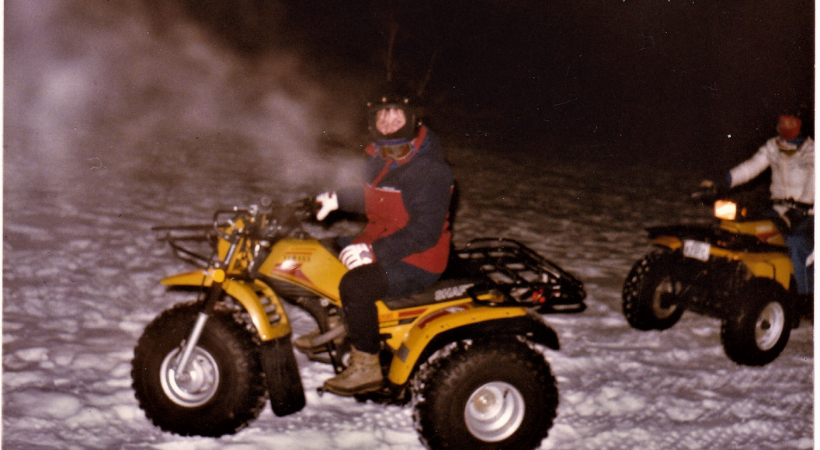
A Few Words of Wisdom
There are a few items I believe any person who asks ‘How does it feel like in Canada in the winter?’ should be told:
-
During Canadian winters people are exposed to fewer hours of sunlight. There are two effects you should be aware of:
-
Your body will create less vitamin D which is required for good bone health.
-
Reduced natural light in Canadian winters causes depression in some people because the sunlight, through parts of the retina, triggers the release of serotonin in one’s brain.
-
2. When outside in the sunlight, for any period of time over a half-hour, be aware that the sunlight reflects off the snow. This means the sunlight will have a greater effect on you.
- The other possible, nasty effect could be snow blindness. If it’s a bright sunny day and you're surrounded by snow, there will be much too much light for your eyes. This could result in snow ‘blindness’. If this happens to you (Don’t worry, it’s not permanent), it will feel like you have sharp grains of sand in your eyes. Time is the only cure for this. So, to avoid it, on bright sunny days wear sunglasses (Not metal frames) or tinted ski goggles.
3. No matter who dares you, don’t ever put your tongue on any metal object outdoors in a Canadian winter. It WILL stick!
4. In case of freezing rain there are three tips I wish to share:
-
Everything will get slippery. You can purchase cleats that fit onto your winter boots. DO NOT wear them indoors on any uncarpeted floor. Not only will you damage the floor, but you are likely to take a fall.
-
An umbrella is often quite useful.
-
Avoid driving, except in emergencies, until after the roads have been salted or ‘sanded’. Some places use sand and others, like Ottawa, use a small crushed stone, called grit, that has 10% salt in it. The salt is only to stop the grit from clumping. Alberta uses no salt, at any time.
5. Winter driving is a whole other ‘kettle of fish’! To cover the subject requires another whole article. I will suggest you take a winter driving course. For anywhere besides Vancouver and the immediate area, put snow tires on your vehicle.
6. Check the weather forecast every day. This is the only way you know you will be prepared for whatever weather occurs that day.
7. Lip balms/Chapstick, hand lotions and moisturizers are a necessity in Canadian winters.
8. Remember, “There is no bad weather, there is just bad clothing”!!!
9. Though gasoline burns more efficiently in the cold, extra is providing heat in your vehicle. Most people preheat their vehicle before heading out. There are two common ways to do this.
-
The most common is to let your vehicle idle in park for at least 5 minutes.
-
The second way is to plug in your vehicle overnight. Canadian vehicles often have what is called a frost plug in the side of the engine or on the oil pan. This will preheat your engine’s fluids.
10. It is not recommended to rent an apartment with electric heat if you have to pay for it. Electric heat is very expensive!
11. To prevent your glasses from fogging up, use one drop of dish detergent and polish both sides of each lens until clear. You have to do this every day or two.
12. Be aware that batteries drain faster in the cold. This includes vehicle batteries. Some people install battery warmers in their vehicles, while others use a trickle charger overnight. For cell phones, carry them as close to your body as possible.
Do you believe you have learned enough to answer: “how to survive winter in Canada”? You have been told about Canada’s winter weather. Winter clothing has been laid out for you. Outdoor winter activities have been suggested which will help you stay warm. I have also provided you with words of wisdom for Canadian winters.
Signed,
A Real Canuck
Navigation
# Why Canada? # Education System # Student Budget # Student permit/visa # Spousal Visa # After landing # Student Housing # Complete Checklist # Driving License # Study and Work # All Provinces in Canada # PR in Alberta # PR in British Columbia # PR in Manitoba # PR in New Brunswick # PR in NL # PR in Nova Scotia # PR in Ontario # PR in PEI # PR in Québec # PR in Saskatchewan # Cheap Universities # Cheapest Colleges # Alberta DLI # British Columbia DLI # Manitoba DLI # New Brunswick DLI # NL DLI # Nova Scotia DLI # Ontario DLI # PEI DLI # Quebec DLI # Saskatchewan DLI # Part-time jobs # Scholarships in Canada # Survive Winter

Cover Letter
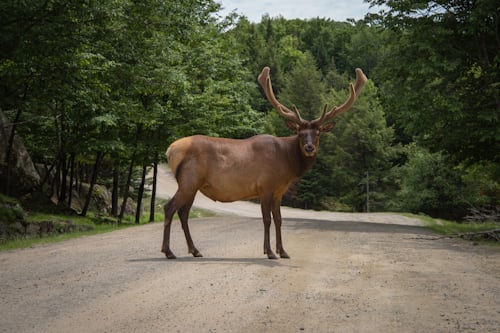
Forwarding Letter
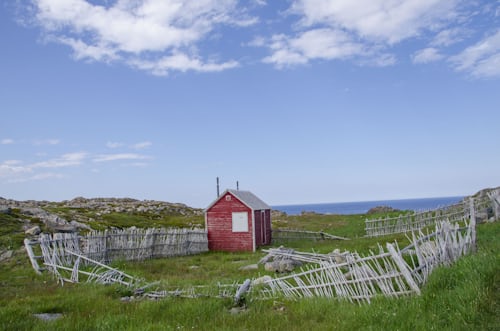
Student Financial Planning

Explanation Letter of Source of Fund

Explanation on previous Visa Rejection

